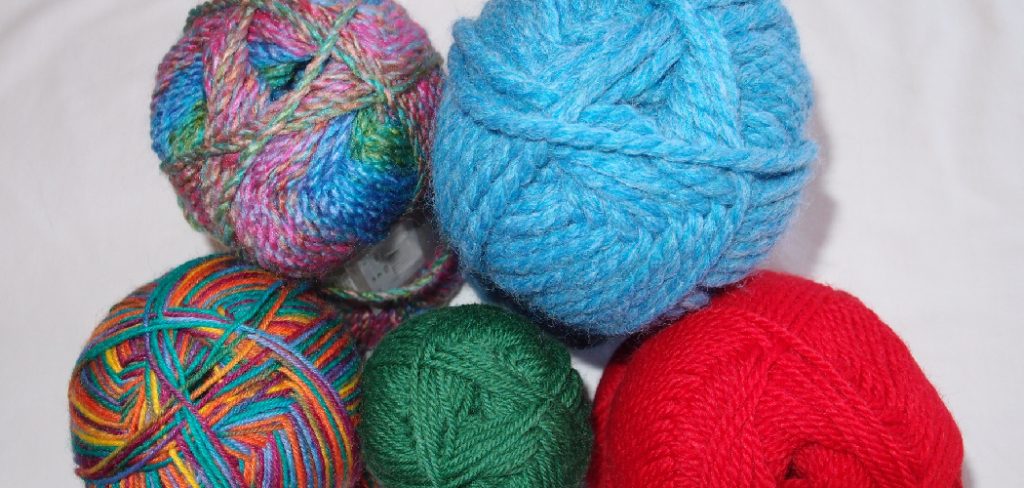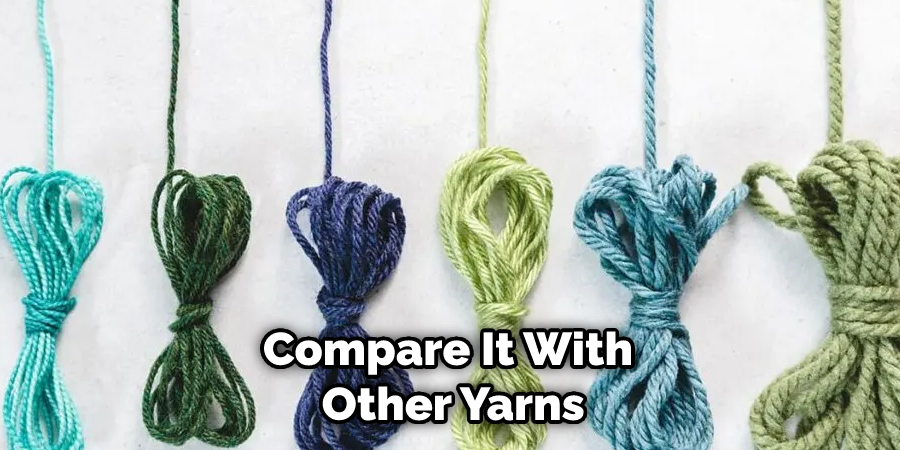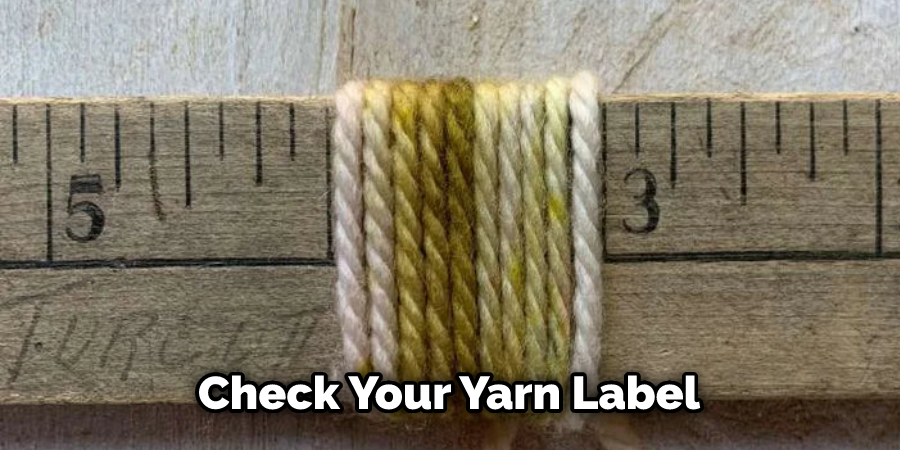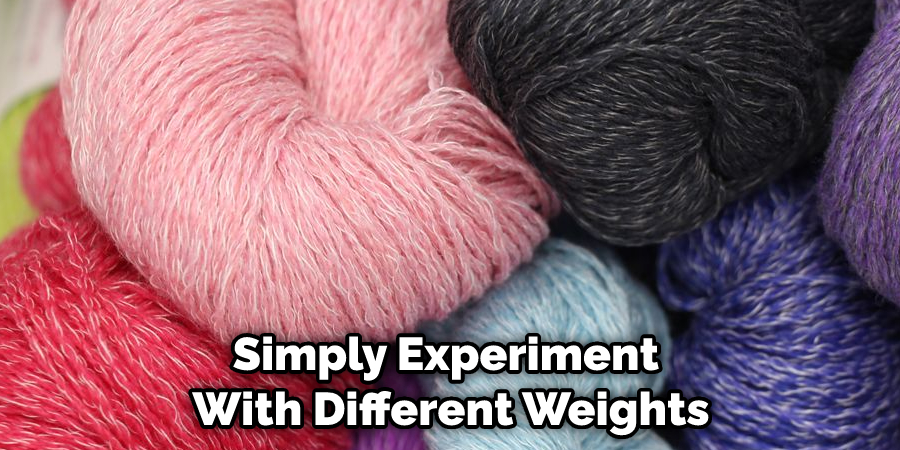Knowing the weight of yarn can be tricky, but it doesn’t have to be complicated. There are a few simple ways to figure out what weight your yarn is so you can choose the best type for whatever project you’re working on. From how to use labels and charts to determine gauge, we’re going over everything you need to know about understanding yarn weight for all different kinds of projects—so that no matter your skill level or type of craft, you can recognize which kind of yarn is right for the job.

If you are a knitter, crocheter, or any other type of yarn enthusiast, understanding the different weights and types of yarn is essential for creating projects with the perfect combination of structure and stretch. Yarn weight refers to how thick each strand is in relation to others. In this blog post, we’ll explore exactly what differentiates one weight from another and provide some helpful tips on how to figure out yarn weight.
Why is It Important to Figure Out Yarn Weight?
There are many reasons why it is important to figure out the weight of yarn. Such as:
1. Ease of Use
One of the main reasons why it is important to know your yarn weight is that it can help you make decisions about knitting or crocheting projects more easily. For example, if you are not sure which size of knitting needles to use for a particular pattern, or whether a certain amount of yarn will be enough to complete the project, knowing your yarn weight can help you to make those decisions more confidently.
2. Pattern Selection
Another reason why it is important to know your yarn weight is that it can help you choose the right knitting or crocheting patterns for your project. Many patterns are designed specifically for certain weights of yarn, so if you want to ensure that your finished project will come out as intended, knowing your yarn weight can help you to choose the right pattern.
3. Gauge
Another key consideration when working with yarn is gauge – or how tightly knit or crocheted a particular piece of fabric is. The size and thickness of the yarn used will impact the gauge, so if you want to ensure that your fabric comes out at the right gauge, it is important to know your yarn weight.
So if you are a knitter or crocheter and are looking to take your skills to the next level, knowing your yarn weight can help you to make better decisions and create higher-quality finished pieces. Whether you’re working on a new project or simply trying to better understand the yarn you already have, understanding your yarn weight will be an important step in getting the results you’re looking for.

8 Ways About How to Figure Out Yarn Weight
1. Measure Yarn With a Ruler:
One of the easiest ways to figure out yarn weight is to measure it with a ruler or measuring tape. Typically, this method will give you an accurate assessment of your yarn’s size, as long as both the starting and ending lengths are taken correctly.
2. Consult a Yarn Weight Chart
Another option when figuring out yarn weight is to consult a chart that gives specific yarn weights and their corresponding measurements. Many online knitting and crochet communities, such as Ravelry, have these types of charts available for your reference.
3. Check How the Yarn Feels
In addition to looking at the fibers used in making a particular type of yarn, you can also check how it feels. Try holding it up to the light and gently rubbing your fingers across it to get a sense of its weight and thickness.
4. Consult How-To Videos
If you’re still having trouble figuring out yarn weight, there are many helpful how-to videos that can walk you through the process step by step. Simply search for “how to figure out yarn weight” online to find a variety of videos that may be able to provide additional guidance and support.
5. Compare Similar Yarns
Another way to get an idea of a particular type of yarn’s weight is to compare it with other yarns that are made from similar materials or have a similar feel. For example, if you’re trying to figure out the weight of a specialty yarn, compare it with other specialty yarns that are in the same category.

6. Talk to Other Knitters or Crocheters
Another resource that can be helpful when trying to figure out yarn weight is your knitting or crocheting community. By talking to experienced knitters and crocheters, you may be able to learn more about the types of yarns that are typically used for specific projects or patterns.
7. Do Some Online Research
If all else fails, you can always turn to online resources for help when trying to figure out yarn weight. There are many useful websites and forums out there dedicated specifically to helping knitters and crocheters find the right types of yarn for their projects.
8. Experiment With Different Yarns and Patterns
Perhaps the best way to figure out yarn weight is simply by experimenting with different materials and patterns. By trying out a variety of yarns, you can gain a better understanding of which weights work well for certain projects, and which ones you may want to avoid in the future. With time, practice, and patience, you will be able to find the perfect yarn for all of your crafting needs.
Some Additional Tips Ans tricks to Figure Out Yarn Weight
1. Do Not Skimp on How You Measure
It is important to take the time to get an accurate measurement when figuring out yarn weight. This means using your ruler or tape measure to get a precise measurement of each section as you work, rather than just estimating or making rough estimates.
2. Consider Gauge
Gauge refers to the size of the stitches in your yarn, and is often measured by the number of stitches per inch or centimeter. If you’re not sure what gauge you should be looking for, consult a knitting or crochet pattern to see what the suggested gauge is.
3. Check Your Yarn Label
To determine yarn weight, it’s important to check your yarn label or packaging. This should provide you with the suggested gauge for your specific type of yarn, and can also help you choose a pattern that matches up well.

4. Consider How You’ll Be Using the Yarn
In addition to looking at the recommended gauge, it’s also important to consider how you plan on using your yarn when determining yarn weight. For example, if you’re making a hat or scarf and plan on using the yarn doubled or tripled up, you may need to choose a heavier-weight yarn than what is recommended.
5. Experiment with Different Yarn Weights
Finally, when in doubt about yarn weight, it’s often helpful to simply experiment with different weights. Try working with a medium-weight yarn first to see how it feels, and then try working with different weights until you find one that feels comfortable for your project. Whether you’re knitting or crocheting, experimenting with different yarn weights can help you get the best results for your particular project.

Conclusion
Now that you know how to figure out yarn weight (and why it’s important), you’re ready to start on that next project with confidence. With a little practice, figuring out yarn weight will become second nature – and then you can get back to what’s really important: enjoying your knitting!
So, when you’re ready to start your next knitting or crocheting project, make sure you know what yarn weight is best suited for your needs. By understanding the different types of yarn weights and what projects they are typically used for, you can create beautiful pieces that are both sturdy and practical. With a little bit of knowledge and some trial and error, you’ll be a pro at choosing the perfect yarn weight in no time!
You Can Check It Out to Make a Rug With Yarn by Hand

